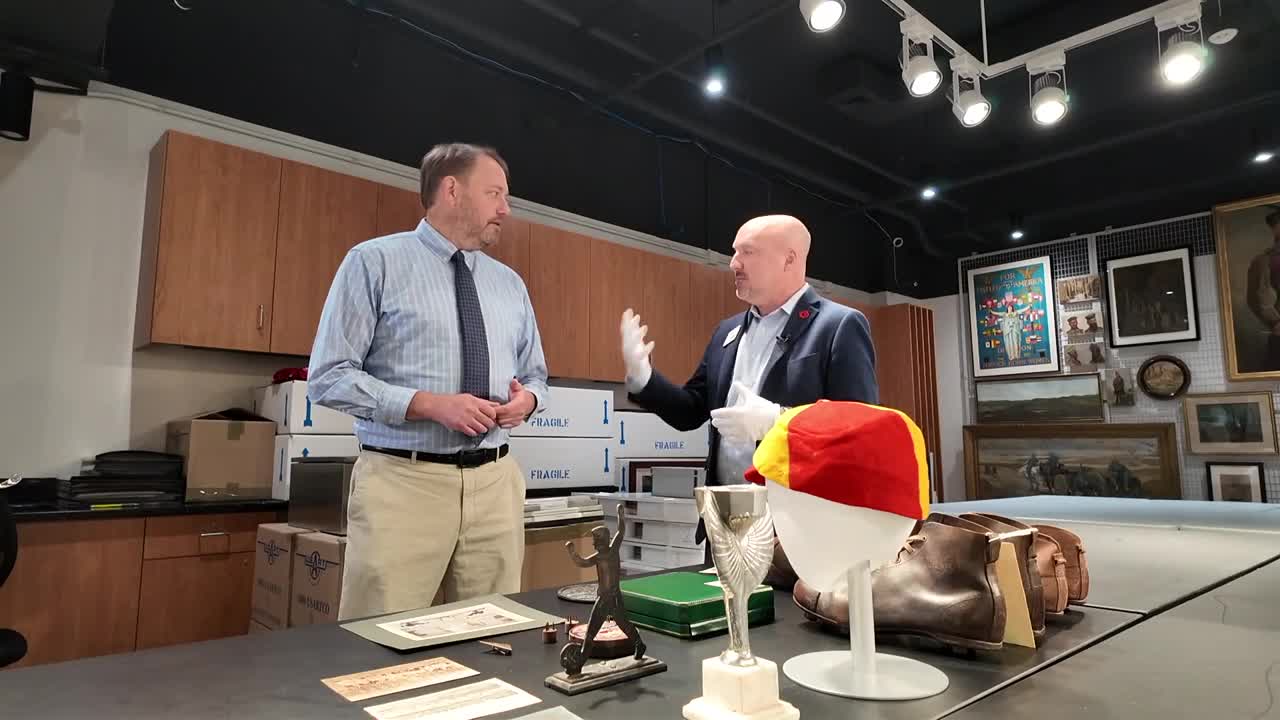KSHB 41 reporter Tod Palmer covers sports business and eastern Jackson County. Share your story idea with Tod.
—
From the famed Christmas Truce to POW camps, soccer played an important role in World War I.
Before FIFA Fan Fest descends on its grounds next year, the National World War I Museum and Memorial will celebrate soccer’s connection with the Great War.
“It's called ‘The Beautiful Game,’” Chief Curator Christopher Warren of the forthcoming exhibition, which will open next February and run through September 2026. “... We’ll have some fabulous artifacts. We're working with museums across the world. Many of these objects are coming to the United States for the very first time (and) have not been seen together in one setting like we'll have here at the Museum and Memorial.”
The Museum’s south lawn will host Fan Fest next summer when FIFA World Cup 26 stages six games at GEHA Field at Arrowhead Stadium.
The most well-known soccer story to emerge from World War I, the Christmas Truce of 1914, happened early in the war during the holiday season.
“At some point during the Christmas season, the British troops reported they heard German soldiers singing Christmas carols ‘Silent Night’ — in German, of course — those types of things, so the British started doing the same,” Warren said.
That eventually led to white-flag-waving British and German troops gathering between the trenches to exchange gifts and kick around a soccer ball.

“During the holiday season, we all feel at some point that nostalgia when you can't be with your family,” Warren said. “... They met in no man's land, and they started exchanging gifts — tobacco, chocolate, those types of things. They probably didn't play an actual game with goals and kept score, those types of things, but they certainly kicked a ball around, some of the troops, as something they had in common.”
It’s a remarkable scene when you understand the brutality of trench warfare in the early 1900s.
“It is a truly remarkable thing that these people not only played soccer, but the guys shared what little they had with each other on each side,” Jim Demis, of Grandview, who was visiting the National World War I Museum and Memorial on Wednesday with family, said.
Unfortunately, the goodwill didn’t last.
“It only happened in the first Christmas of the war,” Warren said. “After this occurred on both sides, the high-ranking officers put a stop to it, transferred some of the junior officers who were involved in it as well, and said this type of camaraderie cannot happen in a war.”
That moment of humanity as a continent was being swallowed whole by violence wasn’t the war’s only connection with soccer.
Away from the frontline, soldiers played soccer to shape and, in some cases, were even issued wooden cleats to nail into their combat boots.

“In training camps in most of these nations, soccer was played for fitness and to learn teamwork, camaraderie, those types of things,” Warren said. “As they went and served in the frontlines, in the trenches, a lot of times when they got off frontline duty, they would play soccer for recreation, to give them a sense of home again.”
It was hugely popular, even in the United States, at that time.
“The American Expeditionary Forces spent more money on soccer equipment and soccer balls for their troops to play in training camps and off the frontlines than any other sport outside of baseball,” Warren said.
Soccer was even played by captured soldiers.
“In POW camps, men needed to bide their time,” Warren said. “To keep their sanity, they played soccer.”
Teams were even organized and played exhibitions in some cases, according to Warren. The guards allowed it because it kept the soldiers distracted and happier.
It’s the same reason religious services and even art were permitted.
“One of the individuals, he was a British soldier who was interred in a German POW camp, he made a whole series actually of soccer player little statues, and we were able to get one through loan for the exhibit itself,” Warren said.
Soccer sometimes also served as motivation.
“Specifically British regiments that were so enthusiastic about soccer already in 1914 to 1918, when they would go over the top, meaning they would go out of their trenches and go across no man’s land to attack, oftentimes they would kick a soccer kind of as inspiration,” Warren said.”Launch the soccer ball, the troops would follow it — if they go to the soccer ball, then they would kick it again just to inspire them to keep going.”
It was instinctual.
“A lot of these guys, they were just grunts,” Demis said.
The first World Cup was played 12 years after World War I, but those histories are intertwined as well.
“The original World Cup trophy, this (angelic) figure itself is based on a French war memorial from the First World War,” Warren said. “... There’s all these direct relationships between not only soccer, of course, and World War I but the World Cup itself, even though the first one wasn’t until 1930.”
Memorial and Museum goers can enjoy a deep dive into those connections through an unprecedented international exhibit, which will open in February and run through September 2026.
—





